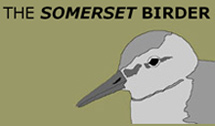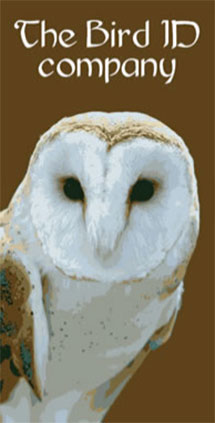Weekly round-up: 24 - 30 April 2013
This week started off with very mild conditions in the southeast as a warm sector delivered sultry south-westerly winds straight from the Bay of Biscay. It was, however, very much a tale of two halves as northern Britain lay in much colder air on the other side of a weak and disintegrating weather front. By Friday this front had slipped south across East Anglia and the southeast, bringing northerly winds and much colder conditions for all. By the end of the week, despite the wind backing into the west, temperatures were still below normal.
As is normal for spring, there was a distinctly ‘pulse-like’ feel to the proceedings, with a noticeable arrival of southwest European rarities associated with the ‘warm blast’ at the beginning of the week. This airstream continued to provide new birds for the southwest on Wednesday and rarities finally reached the east coast by Thursday. With the change in the weather on Friday, however, things inevitably slowed a little though a scatter of new discoveries was still made.
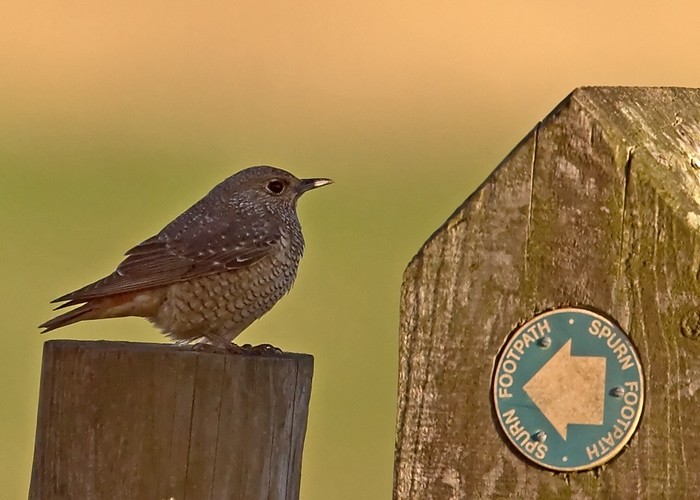
The bird of the week was undoubtedly the female Rock Thrush at Kilnsea, Yorkshire on 25th and 26th. Though a little mobile, and out of view in the caravan site at times on the first day, it did give good views and was enjoyed by many. Formerly more regular, Rock Thrush is now a major rarity. There have been 27 records to the end of 2011, with another two in Ireland, but this is the first ‘twitchable’ bird since the mid-nineties.
In the post-war era, there were five in the 1960s, three in the 1970s, an impressive ten in the 1980s but then four in the 1990s and only a token single since the beginning of the new century. For those twitching in the 1980s, therefore, this was an easy bird to see, at least three being widely available (at Minster, Kent from 5th February to 1st April 1983, on St. Mary’s, Isles of Scilly from 16th to 18th October 1984 and at Llyn Alaw, Anglesey from 4th to 6th June 1986). The next most widely-twitched was the male at Hunstanton Golf Course on 22nd to 25th May 1995, famously rescued from the clutches of a Sparrowhawk, but the only subsequent long-stayer was on Bryher, Isles of Scilly from 28th September to 2nd October 1996.
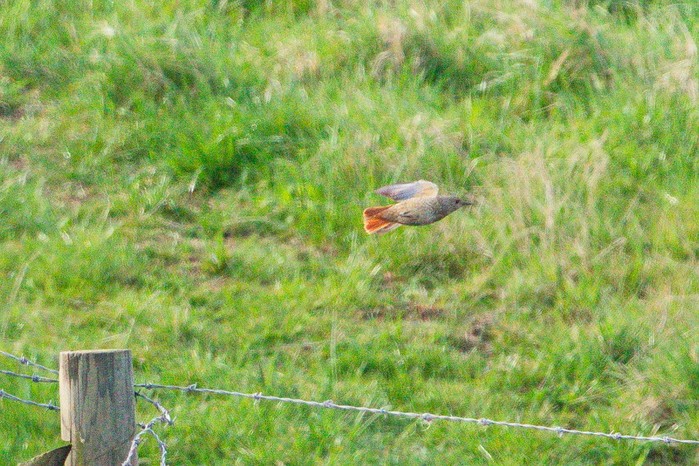
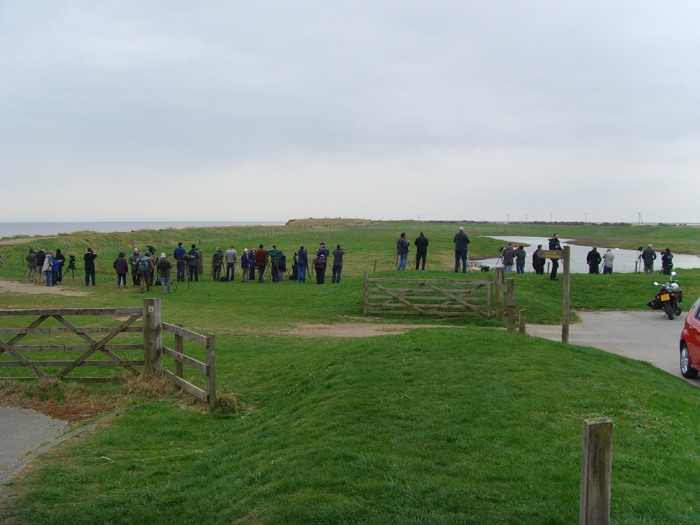
This week’s bird is the third for Yorkshire and the second for Spurn. The first county record was at Sutton Bank on 17th May 1969, followed by a bird at Spurn on 3rd to 4th May 1984.
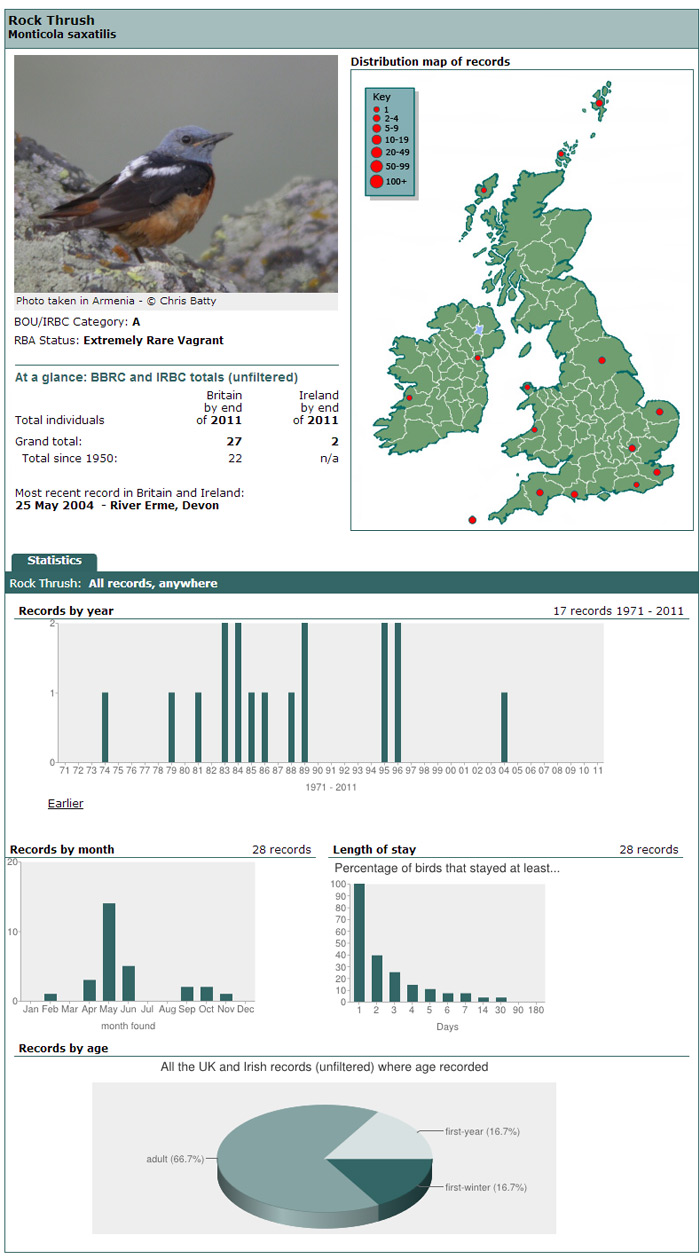
The main event of the week (as opposed to a single bird) - the arrival of a trio of Iberian Chiffchaffs - clearly had the same geographical origins. On 24th singles were found singing at Lower Moors, St. Mary’s (already hosting a Pallid Swift and a Woodchat Shrike) and at Boldon Flats, Durham on 24th (a new bird for the county). Then, next day, a calling bird (giving its rather Siskin or Reed Bunting-like downslurred ‘seeooo’ note) was found at Flamborough Head, Yorkshire - the first non-singing bird to be found in Britain. The Durham bird was reported again next day but not thereafter but the Scilly and Yorkshire birds both stayed, the former to 26th and the latter to at least 30th.
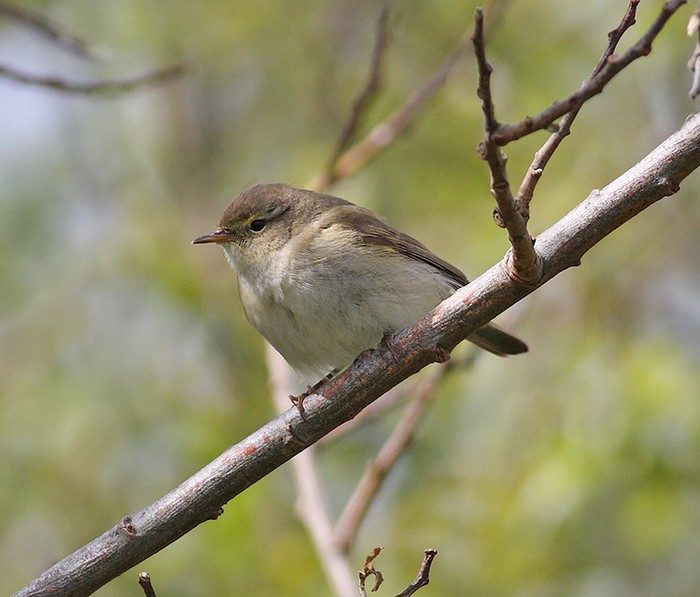
Given the weather, the appearance of 3 Iberian Chiffchaffs should not have been a surprise. Increasingly a standard part of the spring rarity parade, this is a bird worth looking (or listening) for almost anywhere. Though ‘mixed singers’ and aberrant Willow Warblers and Chiffchaffs are out there, the real thing seems to be genuinely commoner than either. Since the first, at Brent Reservoir, London on 3rd June 1972, there have now been a further 28 records to the end of 2011 with another one in Ireland. This is clearly a bird ‘on the up’ and, in stark contrast to most spring passerine rarities, is as likely to be discovered inland as at a coastal hotspot. With a spring bird now located on call rather than song, the next challenge is to find a calling bird in autumn!
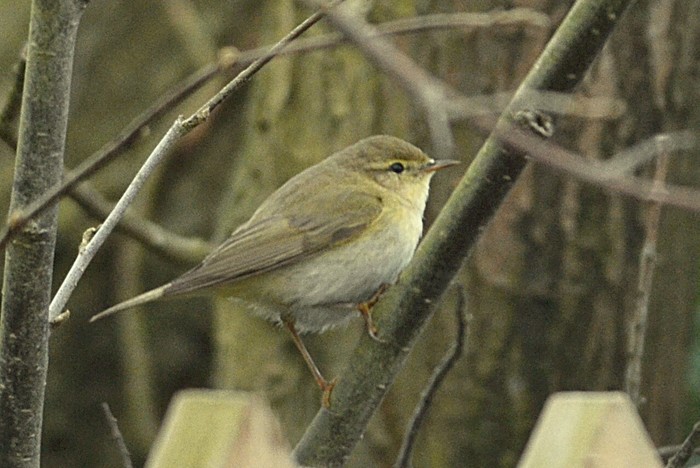
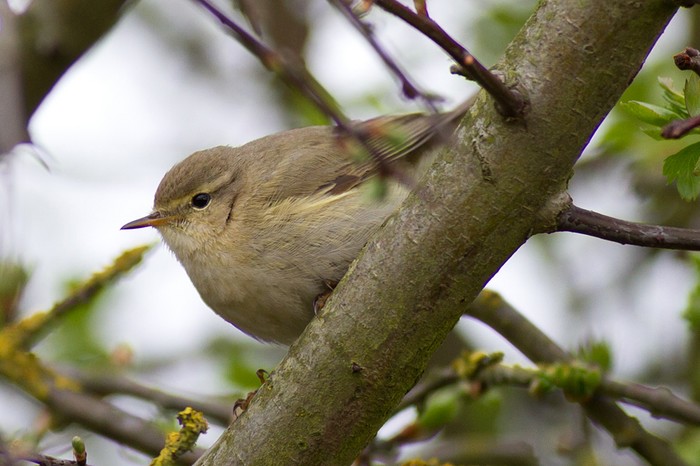
The other significant event of the week involved White-billed Divers - again! In an astonishing and unprecedented spring for this species, they continued to dominate the headlines. The counts off Lewis, Western Isles earlier in the month were impressive enough but have now been somewhat eclipsed by the numbers found just offshore from Aberdeenshire. This week, another intrepid pelagic trip unearthed even more remarkable numbers, with no fewer than thirteen counted on 27th!
Also still present this week was Wales’s first Pallid Harrier - the juvenile on Skomer, Pembrokeshire. Found on 20th and still present for much of 21st, it was then thought to have gone but it reappeared on 25th and was then, amazingly, joined by a female Montagu’s Harrier on 26th to 30th to provide the best lesson in small harrier identification ever available in Britain!
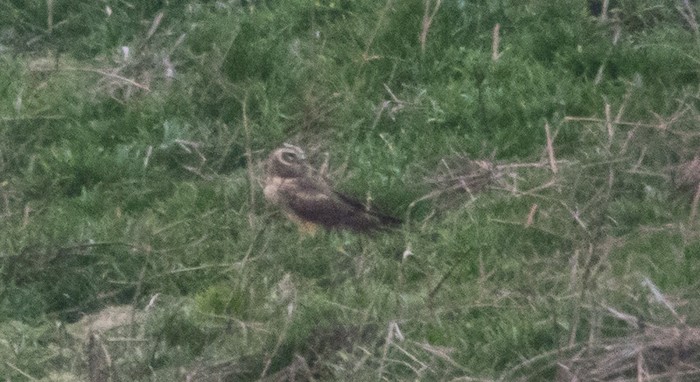
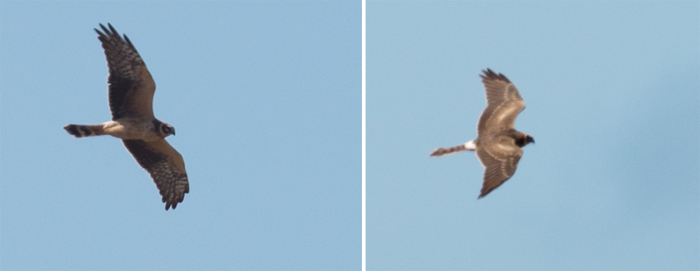
Perhaps the prettiest bird of the week was the male Eastern Subalpine Warbler at Landguard, Suffolk from 26th to 27th. A nice contrast to the influx of Western Subalpines, this was a strikingly different bird and an easy one to identify. It showed the typical combination of powder-blue/grey upperparts, and dark vinous-pink restricted to the chin, throat and upper breast. Also typically, the flanks sometimes appeared weakly washed pale pink but at other times appeared the same cold greyish-white as the rest of the underparts.
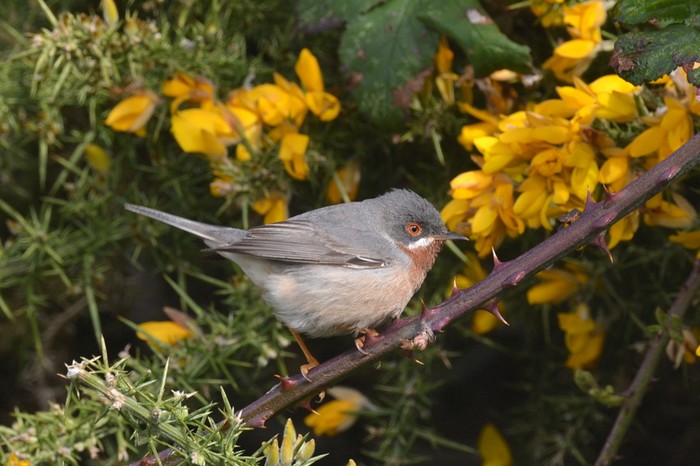
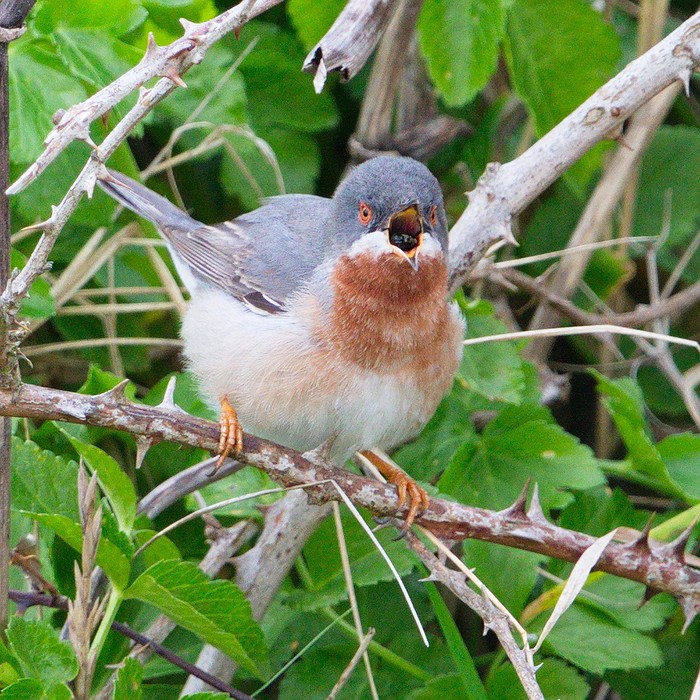
The status of Eastern Subalpine Warbler in Britain is not well-documented, most previous records not distinguishing between Western and Eastern (or indeed Moltoni’s) Subalpine Warblers so it is tempting to assume that they have been under-recorded. The date of this bird appears ‘normal’. Like its western cousin, Eastern Subalpine Warbler is an early migrant.
On North Uist, Western Isles, the young drake Harlequin was still present on 25th but was not seen subsequently.
Bird of the week on the continent was a gorgeous male Caspian Stonechat in Finland on 26th and 27th. Looking at first sight like a Siberian Stonechat, a bit of tail-flirting and some flight views soon revealed massive white Wheatear-like tail panels. This stunning bird is yet a further reminder that this bird has still not been seen by many in Britain. With another in France earlier in the spring, a fully twitchable bird here is now well overdue.
As befits the season, Pomarine Skuas began to make their first significant appearance this week, their presence hastened no doubt by the cool brisk westerly airflow. A tiny handful were seen in the Channel but 23 passed Bowness-on-Solway on 26th and a more impressive 53 flew north past Balranald, North Uist on 28th with another 34 next day. Rare seabirds were otherwise rare, though a Sabine’s Gull and a Balearic Shearwater were in Galway Bay on 29th.
Away from the excitements off Aberdeenshire, more traditional White-billed Diver records included birds off Papa Westray, Orkney on 26th and South Ronaldsay, also Orkney, on 27th and 28th. A further single trailed the Pomarine Skuas off Balranald, North Uist on 28th. At the other end of the country the Pied-billed Grebe continued its residence at Ham Wall RSPB, Somerset all week.
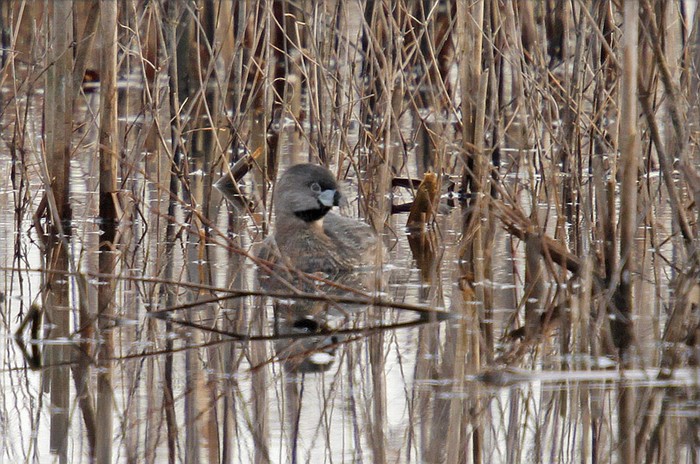
As ever, Great White Egrets dominated the herons department with at least 2 in Somerset’s Avalon Marshes, 2 at Dungeness, Kent and 2 over Cassiobury Park, Hertfordshire during the week. Other singles were seen in Devon, Suffolk, Norfolk, Cambridgeshire, Wiltshire, Gloucestershire, Worcestershire, Northumberland, Wicklow and Lancashire.
Meanwhile, a single Cattle Egret was at Grove Ferry, Kent on 25th and at Oare Marshes on 28th, whilst 2 Night Herons were at Dartington, Devon on 24th with a single remaining there for the rest of the week.
Purple Herons responded well to the blast of mild air, with singles at Ormesby and Thetford, both Norfolk, on 26th, Kenfig, Glamorgan on 26th and 27th and Frampton, Gloucestershire, Knock Lake, Dublin and Stockwood, Dorset on 28th.
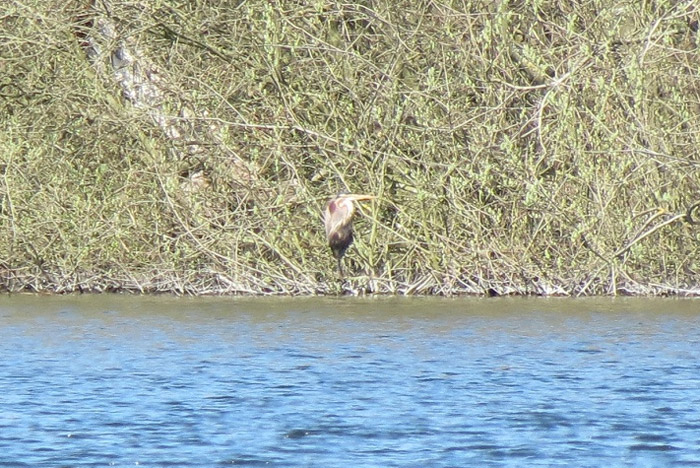
White Storks , some of highly debatable origin, continued to be obvious, with the Norfolk duo still between Great Yarmouth and Acle all week with one of these or another at Aylsham on 29th. Elsewhere, singles flew over Girton, Cambridgeshire and Dalton, Cumbria (this latter bird apparently an escapee) on 25th, one was at Sandbach, Cheshire on 27th with another at Taunton, Somerset the same day and another escapee was at Trowbridge, Wiltshire on 28th.
Finally, the now-resident Glossy Ibis was still at Marloes Mere, Pembrokeshire to 30th.
Somewhat unseasonal now, as well as in a non-traditional location, was a Tundra Bean Goose at Macroom, Cork from 27th to 29th. Other lingering geese included a Black Brant at Kilnsea, Yorkshire to at least 28th and single Richardson’s Canada Geese on North Uist, Western Isles on 24th, at Loch Gruinart, Islay on 27th and at Caerlaverock, Dumfries and Galloway on 29th. Two Lesser Snow Geese were at Burghead, Moray on 24th and at Kinloss on 25th and 26th.
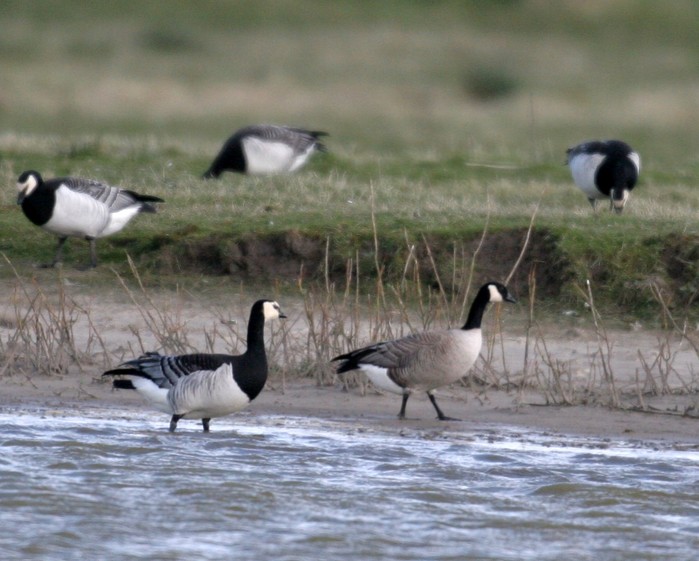
Long-staying Lesser Scaup were at Holme Pierrepoint, Nottinghamshire to 27th and at Borwick, Lancashire and Saltholme, Cleveland to at least 29th. Elsewhere, birds were at Port Glasgow, Clyde on 28th, Lough Neagh, Armagh on 29th and Pugney’s Country Park, Yorkshire on 30th.
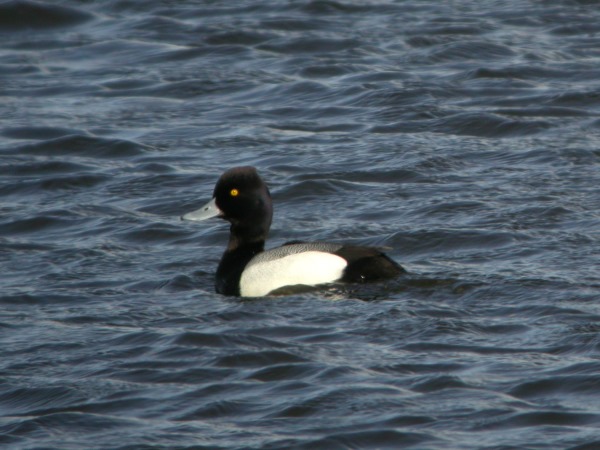
Ring-necked Ducks were also much in evidence, with birds in Yorkshire, Western Isles, Aberdeenshire, Essex, Kent, Pembrokeshire, Cornwall, Somerset. The diving duck line-up was completed by the long-staying Ferruginous Duck at Minsmere, Suffolk.
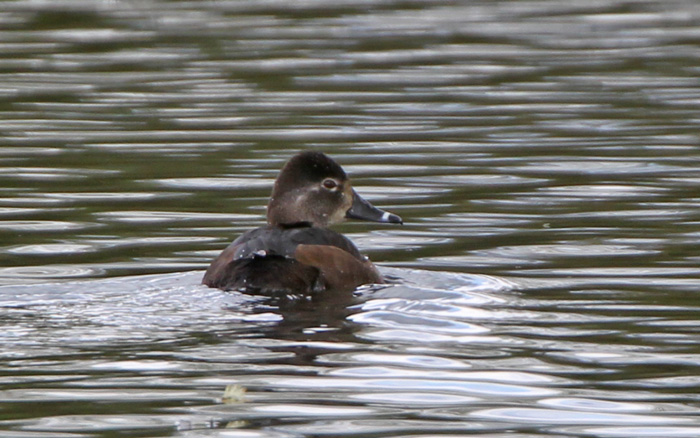
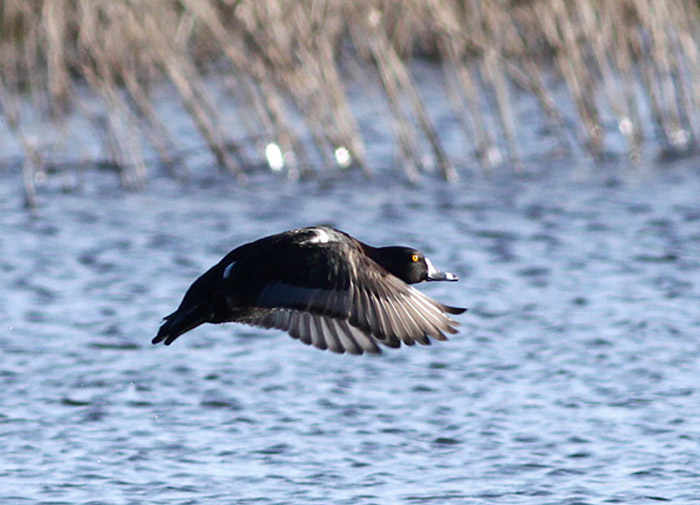
Green-winged Teals also featured prominently, with birds in London, Bedfordshire, Donegal, Lancashire and the Western Isles, but the only American Wigeon reported was at Twechar Marsh, Clyde on at least 24th to 27th.
Turning to the sea, single Surf Scoters were off Rossbeigh, Kerry and Musselburgh, Lothian and King Eiders on the Ythan Estuary all week and off Whalsay, Shetland on 26th and 27th.
Corncrakes were seen this week on Bardsey, Gwynedd on 24th and, also in Wales, at St. David’s Head, Pembrokeshire on 25th.
Late April is still early for rare migrant waders but there were nevertheless some quality arrivals. Pick of the bunch were 2 Black-winged Stilts at Newport, Gwent on 26th then at Ham Wall RSPB, Somerset on 27th. This was the first of several instances this week of birds being quickly relocated at well-watched sites. The Somerset Levels are proving to be not only an excellent site for pioneering breeders but also an increasing draw for vagrant wetland birds.
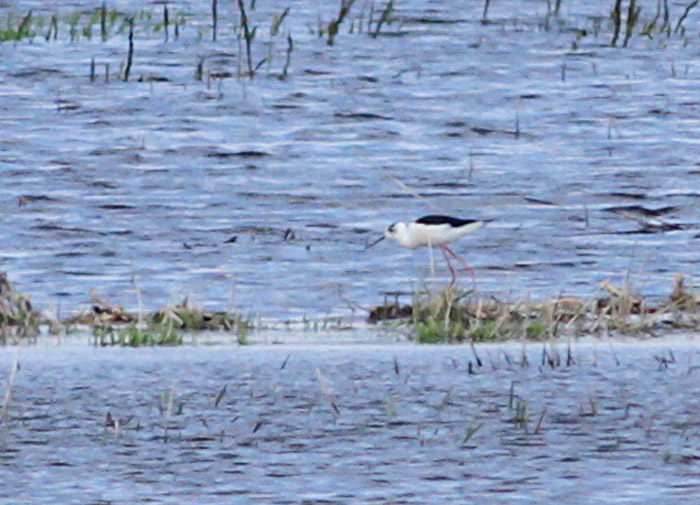
As is traditional, Pectoral Sandpipers began to make an appearance, singles gracing Backworth Pond, Northumberland on 24th, Rainham Marshes, London on 25th and Holland Haven Country Park, Essex on 26th. Presumably the London and Essex birds were another instance of the same individual being relocated. Continuing the Nearctic theme, a Lesser Yellowlegs was at Ireland’s premier wetland bird site, Tacumshin, Wexford, on 27th and 28th, with another at Dundalk Docks, Louth on 29th and 30th - the same bird?


Dotterel were much more in evidence too with 4 at Ballinskelligs, Kerry for most of the week, 2 at Coveney, Cambridgeshire on 26th, a single at Bury Down, Berkshire to at least 29th, 3 on Slieve Muck, Down on 27th, 8 on Plynlimon, Ceredigion on 27th, 2 at Ringstead, Norfolk on 28th, 7 at Bolsover Derbyshire on 29th and 7 (presumably the same flock) at Pleasleyhill, Nottinghamshire later the same day, also 5 at Tetney Lock, Lincolnshire, and 2 at Cwm Cadlan, Glamorgan, 3 at Plex Moss, Lancashire and 2 still at Tetney Lock on 30th.
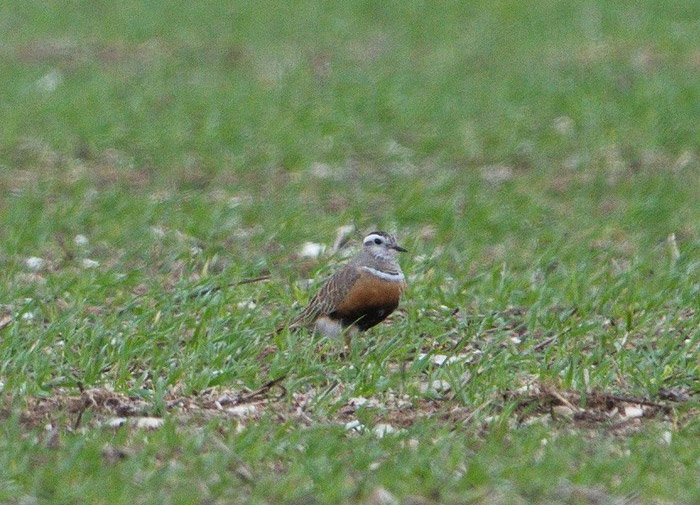
In yet another episode of serial relocation what was presumably the same Whiskered Tern was at Carsington Water, Derbyshire on the early morning of 24th before moving to Blithfield Reservoir, Staffordshire later the same day. It or another then moved from Chew Valley Lake, Somerset - another famous vagrant-attracting site - on 25th to Frampton, Gloucestershire on 26th and Durleigh Reservoir, Somerset on 27th.


The other ‘good tern’ of the week was a Caspian Tern which crossed from Humber to the sea and then flew north at Kilnsea, Yorkshire on 25th, much to the delight of the assembled Rock Thrush-watchers.
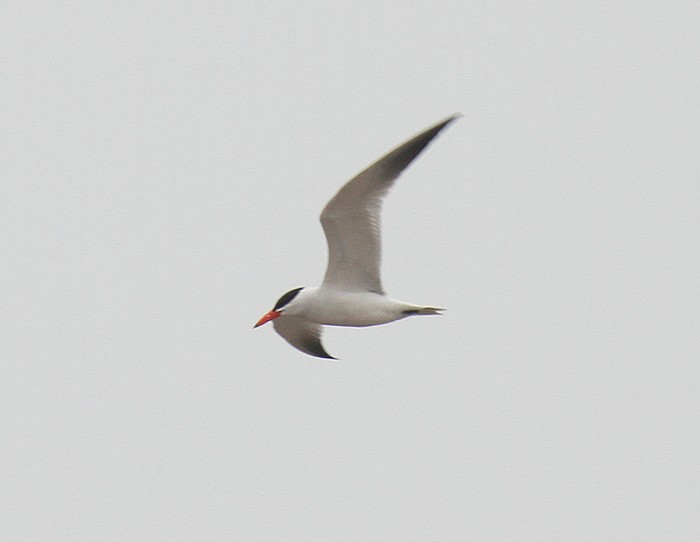
Continuing the relocation theme, and illustrating once again the prime ‘pulling power’ of the best quality habitats, an adult Bonaparte’s Gull was at Theale Gravel Pits, Berkshire on 26th before finding Chew Valley Lake, Somerset on 27th. Another Bonaparte’s Gull, this one a first-summer bird, was at Elmley, Kent on 28th and 29th.
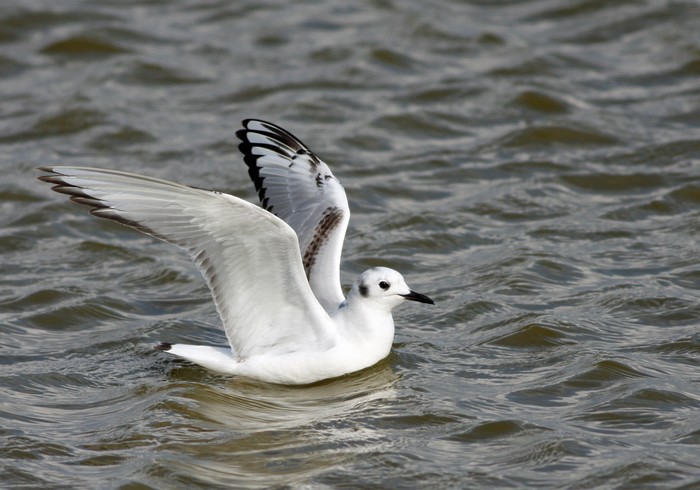
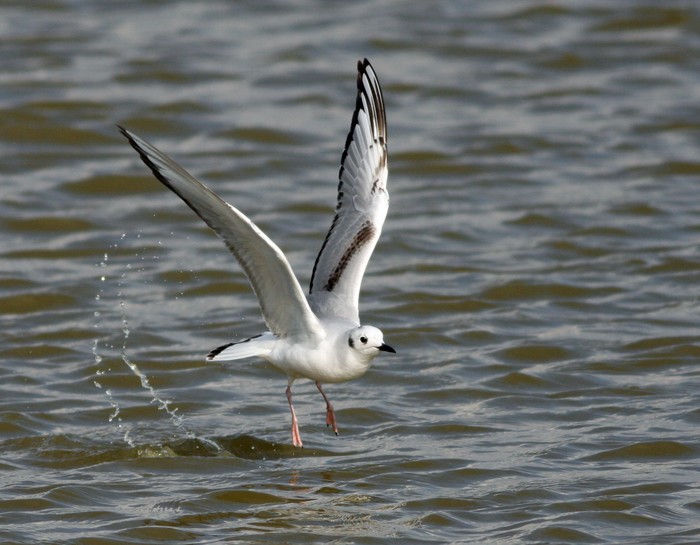
In Leicestershire, a first-summer Ring-billed Gull roosted at Rutland Water on the evenings of 24th and 25th, presumably the same bird as that seen during the day at Melton Country Park near Melton Mowbray, also Leicestershire, all week. A different individual also visited Stanwick Gravel Pits, Northamptonshire and, to prove it, was present at the same time as the Melton bird. A more traditional venue for a Ring-billed Gull this week was Castlegregory, Kerry but a bird at Quendale, Shetland on 27th and 28th was less typical.
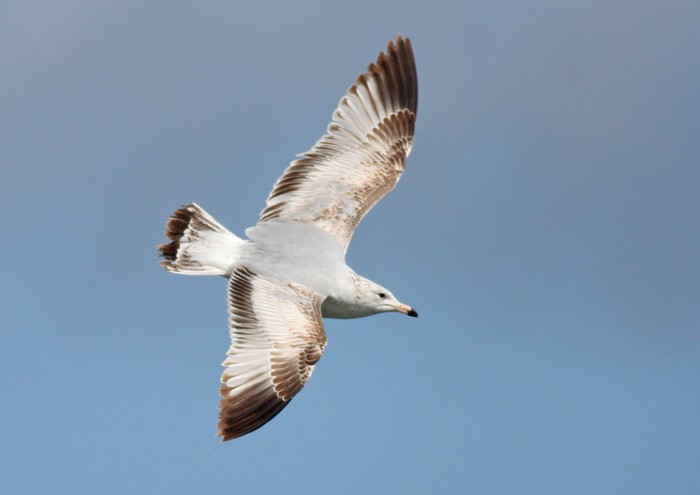
The other best gulls of the week were single Kumlien’s Gulls at Barmston, Yorkshire still to at least 27th and at Timoleague, Cork on 29th. Otherwise, the number of Iceland Gulls and Glaucous Gulls continued to diminish, with around 15 of the former and 10 of the latter reported.
Reports of a Black Kite around the Hampshire/Sussex area presumably all related to a single wandering individual. Sightings came from Sompting, West Sussex on 24th, Romsey, Hampshire on 25th, Stubbington, Hampshire and Littlehampton, Sussex on 26th and Angmering, Sussex on 28th. Another was at Burnham Norton, Norfolk on 29th before flying west over Brancaster, with another at Appledore and Rochester, Kent on 30th.
The year’s first Red-footed Falcon - an adult female - frequented St. Martin’s, Isles of Scilly on 25th and 26th, adding further to the archipelago’s excellent haul of spring rarities, though the origins of this bird clearly lay to the southeast rather than the southwest.
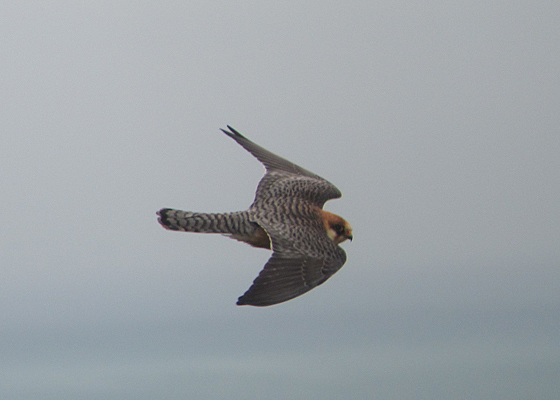
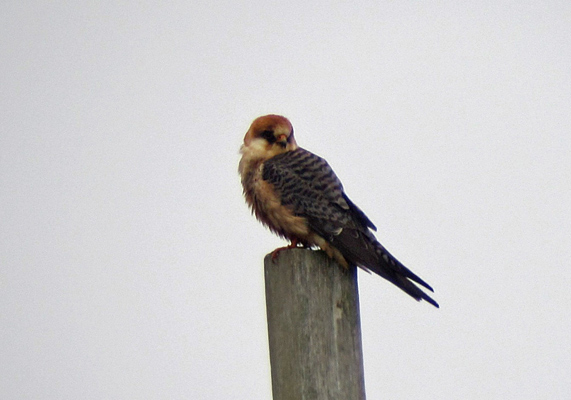
Birds from more northerly climes frequented, needless to say, northern Scotland, where a Gyr Falcon was on Mainland Orkney on 25th and 30th and a Rough-legged Buzzard at Stornoway, Lewis on 27th.
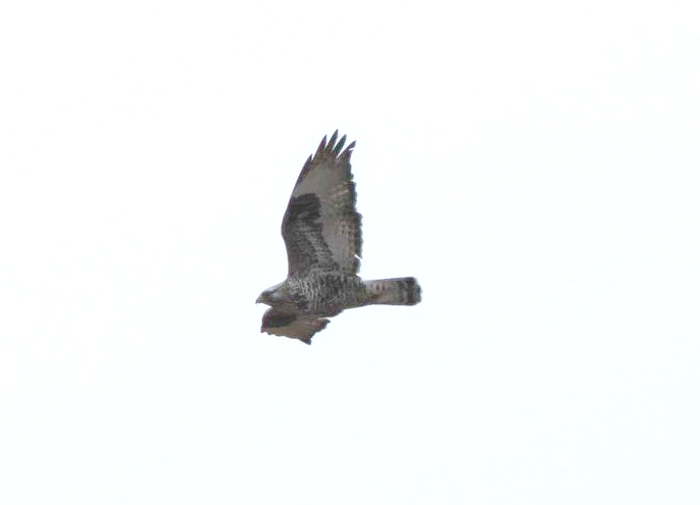
The Pallid Swift was still touring the Isles of Scilly to at least 30th, visiting at least St. Mary’s and St. Martin’s.
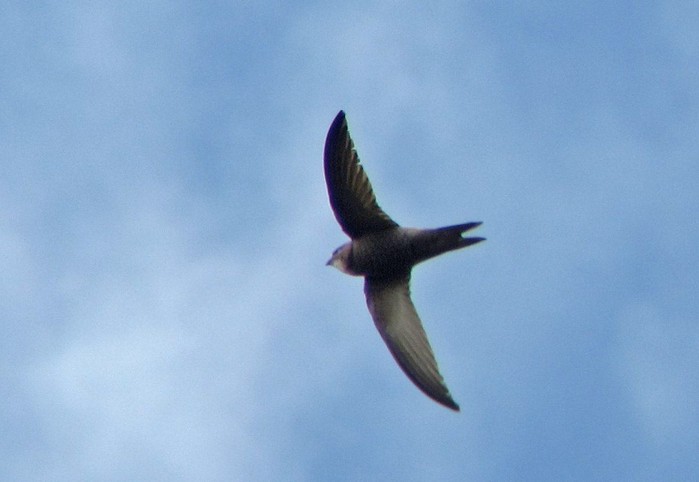
As expected in early spring arrivals from the southwest, the dominant species were Woodchat Shrike and Western Subalpine Warbler . Anywhere sticking out in this general direction did well in the first half of the week and the most prominent locations did best, with St. Mary’s, Isles of Scilly, St. David’s Head, Pembrokeshire and Aberdaron, Gwynedd all hosting both species at the same time. Further Woodchat Shrikes were at Chew Valley Lake, Somerset (a particularly productive spell here), St. Just, Cornwall, near Swaffham, Norfolk, North Widcombe Common, Somerset and Courtmacsherry, Cork.
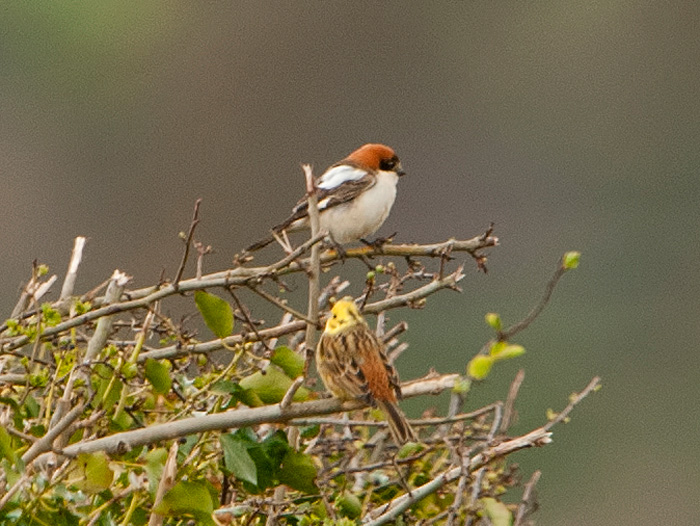
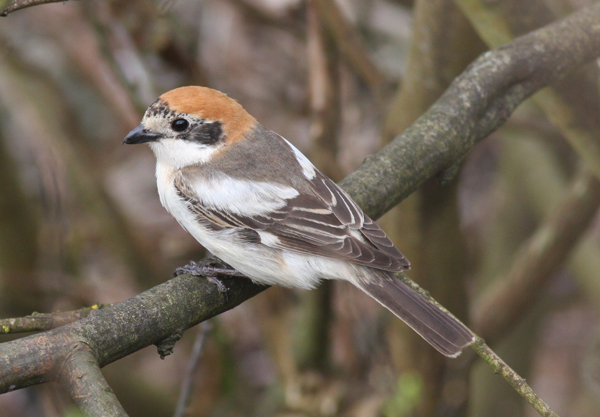
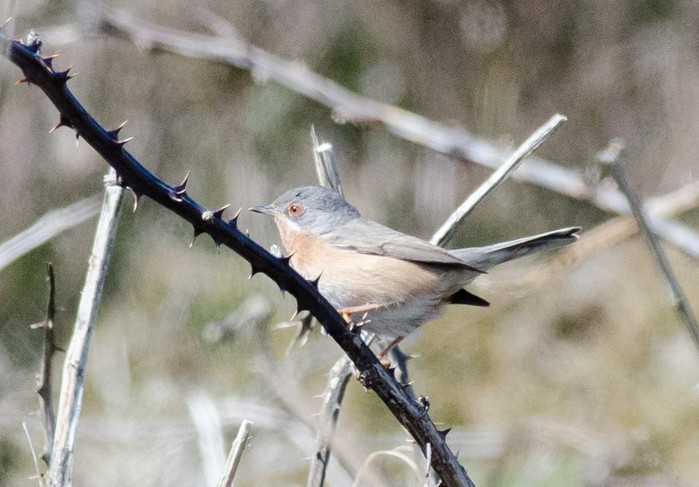
As expected, a scatter of Red-rumped Swallows was also recorded, with singles at Dungeness, Kent on 24th and 27th, Attenborough, Nottinghamshire on 26th, Lodmoor, Dorset on 27th, Spurn, Yorkshire on 28th and Dun Laoghaire, Dublin on 30th. A Short-toed Lark joined the rarity parade on St. Mary’s, Isles of Scilly on 24th. Bee-eaters were few and far between this early in the spring but singles did reach Niton, Isle of Wight on 27th and near Shrewsbury, Shropshire on 29th to 30th.
Other standard spring scarcities included Golden Orioles at Inishbofin, Galway on 24th, 2 on St. Martin’s, Isles of Scilly on 25th, a single at Pennington, Hampshire on 27th to 29th and a moribund and soon dead bird on a trawler out of Newlyn, Cornwall, also on 29th.
Hoopoes were at Doonfoot, Ayrshire, Torbay, Devon and Swanage, Dorset on 25th, Spurn, Yorkshire on 26th, Lizard, Cornwall on 26th to 30th, Brynamman, Camarthenshire on 29th and near Ormskirk, Lancashire on 29th to 30th.
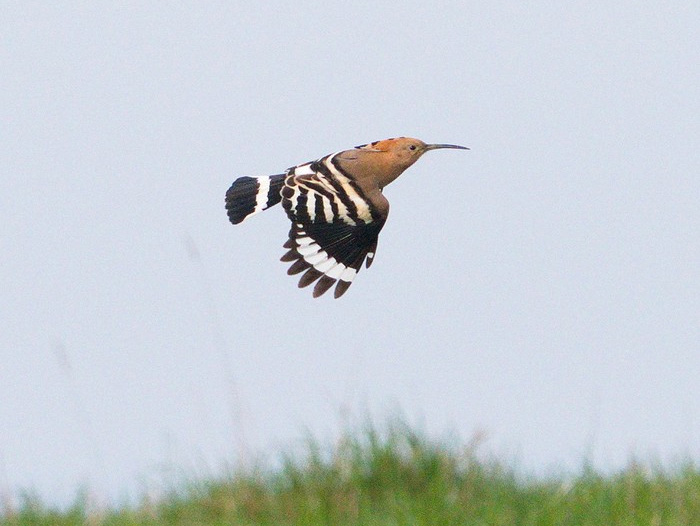
Serins were at Hunstanton, Norfolk on 25th, Gibraltar Point, Lincolnshire on 26th and 27th, Anderby, also Lincolnshire, on 26th, Cockerham, Lancashire on 27th and, more predictably, at Portland, Dorset on 29th and Broadsands, Devon on 30th.
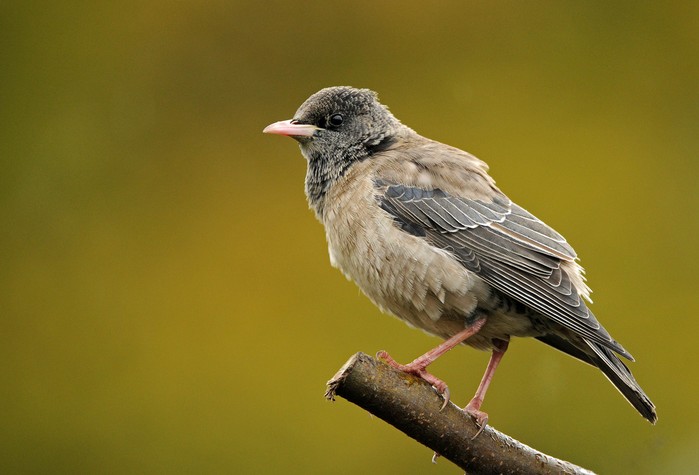
Although the week was dominated by arrivals from the southwest, a few eastern rarities did manage to sneak through. The best were two brief Citrine Wagtails - at Kelling and Cley, Norfolk on 25th and Spurn, Yorkshire on 30th - but a first-summer Rose-coloured Starling was in Orford, Suffolk all week and Wrynecks were at Bovey Tracey, Devon on 26th and at Kingsdown, Kent on 27th and 28th. Richard’s Pipits at Spurn, Yorkshire on 26th and Portland, Dorset on 30th may of course have been northbound winterers from somewhere in the west. A final eastern bird was a singing Savi’s Warbler at Poole Harbour, Dorset on 30th.
Finally, other birds more typical of winter were a Siberian Chiffchaff at St. Just, Cornwall on 24th, a Black-bellied Dipper at Long Melford, Essex on 27th and lingering Great Grey Shrikes at Thursley, Surrey on 28th and Wyke Down, Dorset on 30th. To close the week, the Little Bunting was trapped again at Rawcliffe Moss, Lancashire on 30th.
Andy Stoddart
01 May 2013







